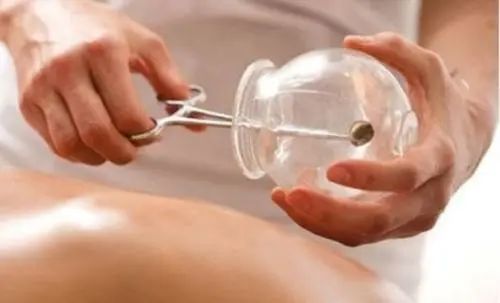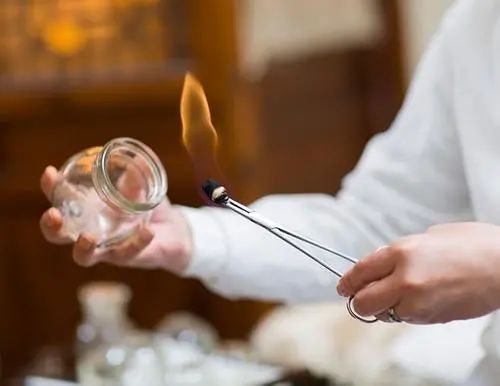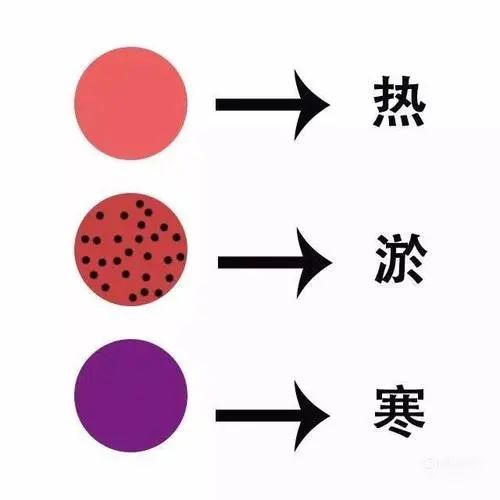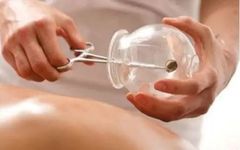Cupping therapy, also known as “Zou Guan” (走罐), involves applying a layer of lubricant such as petroleum jelly or guasha oil to the skin or the rim of the cup before suctioning. The cup is then applied to the selected area using flash fire or dripping alcohol methods, and moved back and forth until the skin becomes red, congested, or even bruised, at which point the cup is removed.


The technique of Zou Guan is a method within the traditional cupping therapy of TCM. It combines the negative pressure suction of a single cup with the frictional force during movement, applying a strong or weak stimulus to the skin’s surface. This regulates the functions of the internal organs and meridians, playing a role in disease prevention and treatment.


Methods of Cupping
Light Suction and Quick Push: This method primarily expels external pathogens by promoting Wei Qi (卫气). Light suction is performed using small fire cups, effective for symptoms like external pathogens (often focusing on the foot Taiyang skin area) and numbness (when combined with local treatment).
Heavy Suction and Quick Push: This method focuses on unblocking meridians and regulating Qi and blood. Heavy suction is achieved by pulling the skin inside the cup more than 8 millimeters above the rim, resulting in a purplish-red color. Its main effect is to influence the meridians’ Qi and blood through the skin and acupoints, thus adjusting the functions of the internal organs. It is suitable for treating certain disorders of meridian and organ imbalance.
Heavy Suction and Slow Push: This method aims to dispel stubborn cold and nourish muscles. After heavy suction (as previously mentioned), castor oil is applied to the skin, and the cup is moved at a speed of 2-3 centimeters per second, causing the skin to turn purplish-red. This technique provides the maximum stimulation, allowing the expulsion of stagnant cold from the internal organs and meridians through the skin and acupoints, while also massaging the local muscles to promote nourishment of Qi and blood, thus invigorating Yang Qi (阳气) to dispel cold.


Reflections on Cupping Marks
1. Dark purple-black marks: Generally indicate insufficient blood supply and poor circulation with blood stasis.
2. Purple marks with patches: Generally indicate cold congealing and blood stasis.
3. Marks with scattered purple spots of varying depths: Indicate Qi stagnation and blood stasis.
4. Bright red marks: Generally indicate Yin deficiency, Qi and blood deficiency, or excess fire due to Yin deficiency.
5. Red and dark marks: Indicate high blood lipids and the presence of heat pathogens.
6. Gray-white marks that feel cold to the touch: Often indicate deficiency cold or damp pathogens.
7. Marks with skin texture or slight itching: Indicate wind or damp conditions.
8. Water vapor on the inner wall of the cup: Indicates dampness in that area.
9. Blisters on the marks indicate heavy internal dampness; if the blisters contain blood, it reflects damp-heat toxicity.



Contraindications
Individuals with leukemia, skin allergies or ulcerated areas, large blood vessels or heartbeats, areas around the five senses, pregnant women, during menstruation, those with neurological disorders, and children under six years old should avoid this therapy.



Copyright Statement: We emphasize sharing,
The article is sourced from the internet.
If there is any infringement, please contact us for removal.
Qingdao Pingdu Taide Hospital
Professional techniques, quality service,

▲ Follow us
Focus on health

